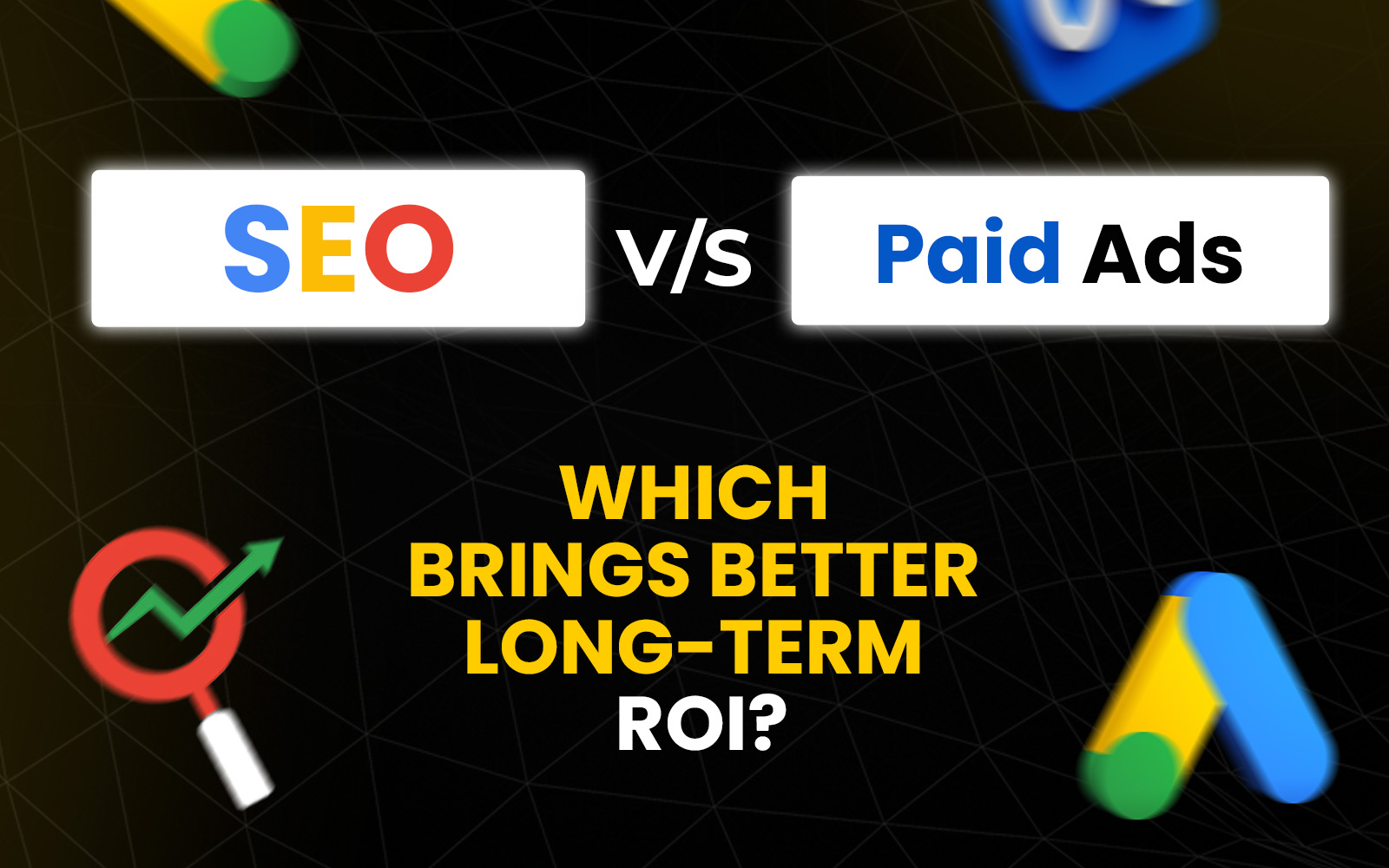SEO vs Paid Ads: Which One Delivers Better Long-Term ROI?
In the ever-evolving digital landscape, businesses are constantly evaluating the best channels to maximize return on investment (ROI). Two major strategies often compared are Search Engine Optimization (SEO) and Paid Advertising (PPC). Both play a vital role in a well-rounded marketing strategy, but when it comes to long-term ROI, SEO often emerges as the more sustainable and cost-effective choice.
Let’s break down the differences between these two strategies and explore why SEO is a smart investment for businesses seeking consistent and long-lasting growth.
Understanding SEO: A Long-Term Investment
SEO is the process of optimizing your website to appear organically on search engines like Google. It involves keyword research, content creation, technical enhancements, link-building, and improving overall site experience.
Unlike paid campaigns that stop generating traffic once the budget ends, SEO continues to drive traffic over time, with compounding benefits. As your website gains authority and content matures, rankings improve and traffic increases without continuous spending.
Key SEO elements that drive long-term ROI:
- High-quality, keyword-rich content
- Fast, mobile-friendly user experience
- Backlink acquisition
- Structured site architecture
What Are Paid Ads and How Do They Work?
Paid ads (PPC) refer to digital advertising where businesses pay platforms like Google Ads, Facebook Ads, or Instagram to display their products or services. You’re charged based on clicks, impressions, or conversions.
PPC delivers immediate results, making it ideal for:
- Launching new products
- Time-sensitive promotions
- Retargeting website visitors
- Testing offers and audiences quickly
However, the moment you stop paying, your visibility disappears—making it more of a short-term tactic.
SEO vs Paid Ads: A Performance Comparison
| Factor | SEO | Paid Ads |
|---|---|---|
| Time to Results | Slower (3–6 months) | Immediate |
| Cost Structure | Upfront/time investment | Ongoing spend |
| Longevity | Long-term traffic | Ends when budget stops |
| Trust Factor | High (organic listings) | Lower (marked as ads) |
| Click-Through Rate | Generally higher | Varies |
| ROI Potential | Increases over time | Declines if budget pauses |
Why SEO Delivers Better Long-Term ROI
Traffic That Doesn’t Disappear
Once your SEO efforts take effect, your website will continue to attract traffic—even if you reduce efforts. You’re not paying for every visit, unlike PPC, where stopping ads means zero traffic.
Compound Growth
Every blog post, backlink, and product page you optimize adds to your website’s authority. Over time, this results in multiple keyword rankings, reduced cost per acquisition, and more sales from organic searches.
Higher Click-Through and Conversion Rates
Searchers trust organic results more than ads. Appearing naturally in search engine results improves credibility and often leads to higher engagement and better conversion rates.
Cost-Effective in the Long Run
While SEO may require a bigger investment upfront, the cost per lead or sale decreases over time. You’re building an asset that generates ongoing value, unlike ads that require continuous payment.
When Paid Ads Are Valuable
While SEO offers long-term value, paid ads have a role in any smart strategy. They’re especially effective for:
- Rapid testing of messaging, keywords, and landing pages
- Gaining traction for a new site or product
- Seasonal or promotional campaigns
- Retargeting abandoned carts or inactive customers
Paid campaigns provide fast results and precise targeting, but they’re best used to support—not replace—organic growth efforts.
The Winning Formula: Combine SEO with Paid Ads
The most effective digital marketing strategies don’t choose between SEO or paid ads—they use both together strategically.
Here’s how SEO supports PPC:
- Optimized landing pages improve Quality Scores, lowering ad costs
- High-performing SEO content can be repurposed for ad campaigns
- Strong domain authority boosts your site’s performance in both paid and organic listings
And how paid ads support SEO:
- Drive traffic to new content for faster indexing
- Use PPC data to find high-converting keywords
- Build remarketing audiences from SEO traffic
When you integrate both channels, you build a resilient marketing engine that captures demand from multiple touchpoints and reduces over-reliance on one source.
Real-Life ROI Example
Imagine an online store investing $6,000 per month into paid ads. It generates $18,000 in revenue—a 3X ROAS. But the moment spending stops, so do the sales.
Now, consider shifting part of that budget to SEO: investing in technical fixes, product page optimization, and long-form blog content. After six months, organic traffic starts bringing in $10,000+ monthly in sales—without ongoing ad costs.
By month 12, the SEO ROI surpasses paid campaigns—delivering leads and revenue at a much lower cost per conversion.
SEO: A Digital Asset That Pays Off for Years
Think of SEO like buying real estate. It takes time to build equity, but once established, it appreciates in value and pays dividends for years.
On the other hand, paid ads are like renting space—quick results, but no long-term value.
When SEO is done right, your website becomes a revenue-generating machine, attracting ready-to-buy customers without needing to outbid competitors daily.
Final Thoughts
Both SEO and paid ads are powerful tools. But if you’re serious about long-term, sustainable growth for your eCommerce or online business, SEO is a non-negotiable investment.
It brings higher trust, lower acquisition costs over time, and builds a competitive moat that ads alone can’t provide.
To maximize performance, use paid ads for short-term goals and invest in SEO for long-term ROI. That’s how smart brands build dominance in their niche.
Contact THE MARKETING MAVERICKS and get your customised plan around seo or paid ads today!






